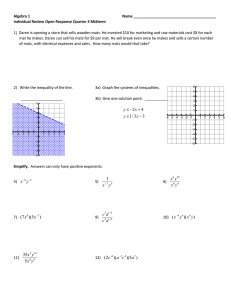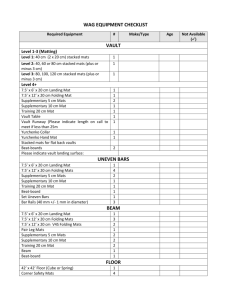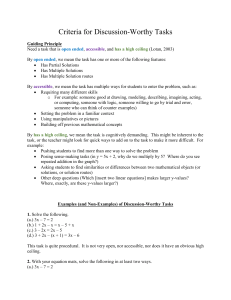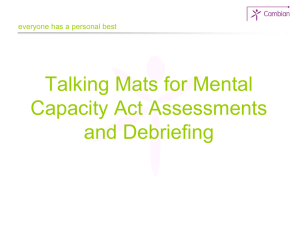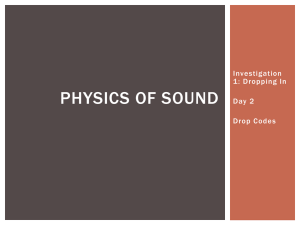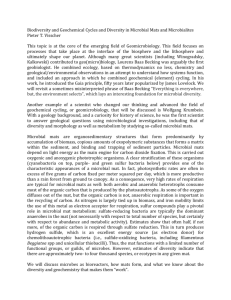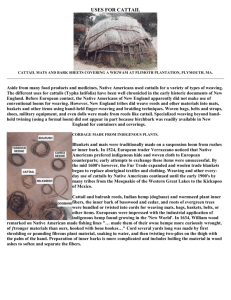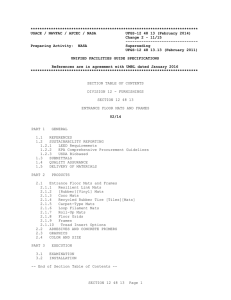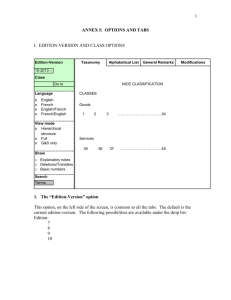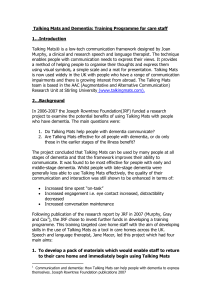Ways to use the Reflecting on Reading Mats
advertisement
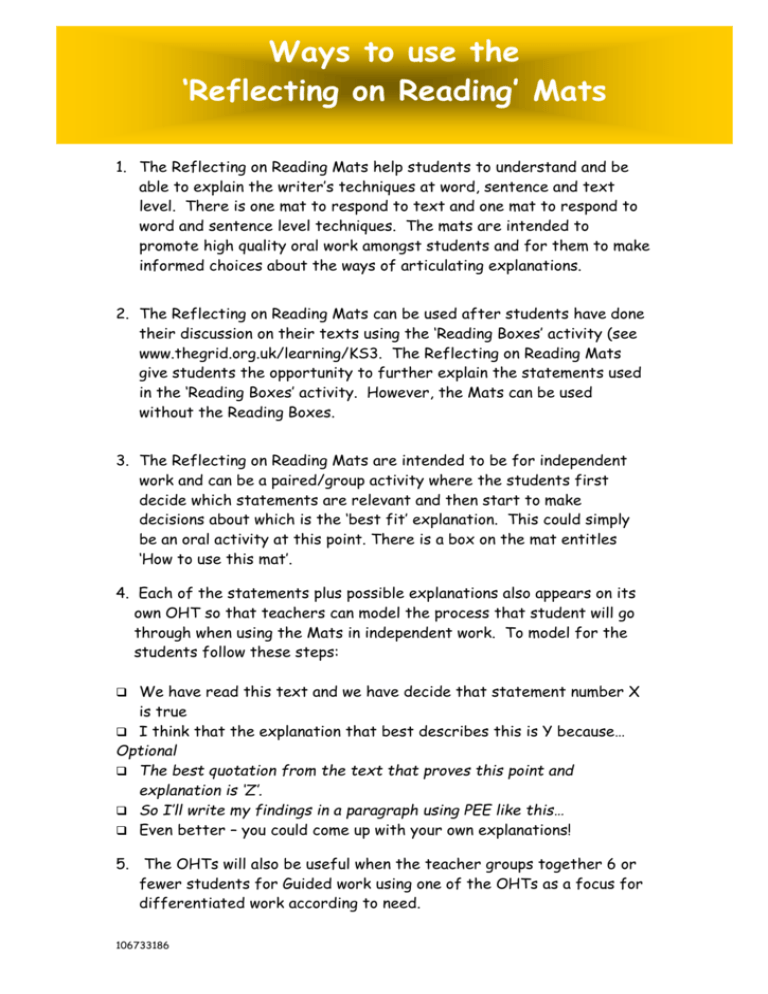
Ways to use the ‘Reflecting on Reading’ Mats 1. The Reflecting on Reading Mats help students to understand and be able to explain the writer’s techniques at word, sentence and text level. There is one mat to respond to text and one mat to respond to word and sentence level techniques. The mats are intended to promote high quality oral work amongst students and for them to make informed choices about the ways of articulating explanations. 2. The Reflecting on Reading Mats can be used after students have done their discussion on their texts using the ‘Reading Boxes’ activity (see www.thegrid.org.uk/learning/KS3. The Reflecting on Reading Mats give students the opportunity to further explain the statements used in the ‘Reading Boxes’ activity. However, the Mats can be used without the Reading Boxes. 3. The Reflecting on Reading Mats are intended to be for independent work and can be a paired/group activity where the students first decide which statements are relevant and then start to make decisions about which is the ‘best fit’ explanation. This could simply be an oral activity at this point. There is a box on the mat entitles ‘How to use this mat’. 4. Each of the statements plus possible explanations also appears on its own OHT so that teachers can model the process that student will go through when using the Mats in independent work. To model for the students follow these steps: We have read this text and we have decide that statement number X is true I think that the explanation that best describes this is Y because… Optional The best quotation from the text that proves this point and explanation is ‘Z’. So I’ll write my findings in a paragraph using PEE like this… Even better – you could come up with your own explanations! 5. The OHTs will also be useful when the teacher groups together 6 or fewer students for Guided work using one of the OHTs as a focus for differentiated work according to need. 106733186 6. The teacher can interrupt the oral work using the Reflecting on Reading the mats and ask students to be ready to feedback their statement, relevant explanation and a quotation from the text to support their point – this will then show that the students have understood the explanation they have chosen. 7. The teacher can then model the ‘How to improve on your explanations’ process on the Mat for the students: This mat has helped you make sophisticated statements or POINTS about the text you have read. It has also helped you to EXPLAIN the effect of these statements. To progress from here you’d need to add in some EVIDENCE from the text to support your point. Doing these three things is called PEE – Point, Evidence, Explanation. Now write paragraphs about the text your teacher has given you using Point, Evidence, Explanation (This mat will help you!) Swap your paragraphs with a partner and get them to underline each PEE. 8. Students can use self and peer assessment to check their PEE. 9. If you want students to make comparisons between texts, you can give out the Reflecting on Reading Table of Comparison so students can clearly see points of comparison and contrast 10. Ask the students to look at the statements on their mats and question them: ‘We’ve looked at these mats in the context of reading but how might these statements be useful to you in your writing?’ Answer: These statements are a reminder/checklist of tips of the techniques they can use as good writers. Students make their own conclusion about the link from Reading into Writing. 11. Can you look at the statements and explanations and begin to categorise them into ‘Frequently used in Fiction’ and ‘Frequently used in Non- Fiction’ or ‘Frequently used in Inform/Explain/Describe’ Analyse/Review/Comment etc. 12. The Mats can be readily used in class for any reading/writing work so the students always have a selection of vocabulary/sentence starters to use when reflection on texts so they can improve their own repertoire ready to use when they do not have the mats. All the statements provide excellent checklists/tips for writing. 106733186
